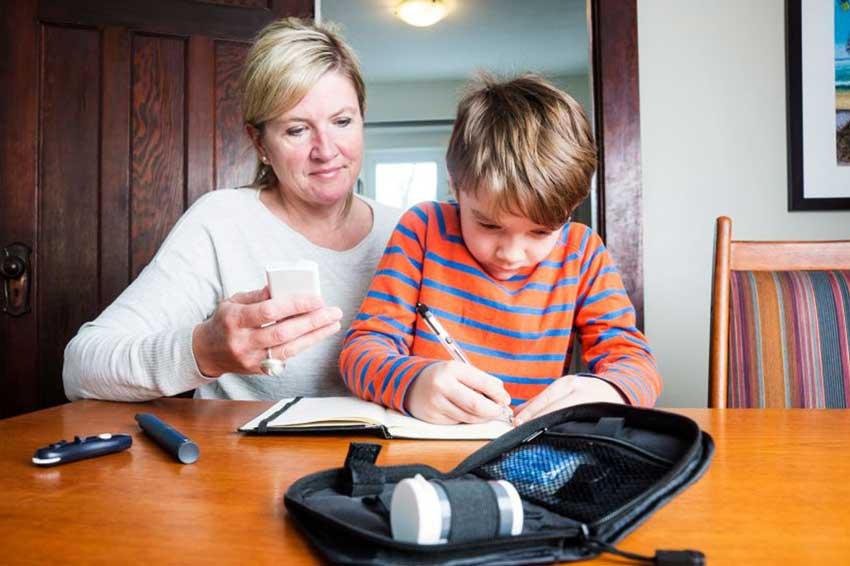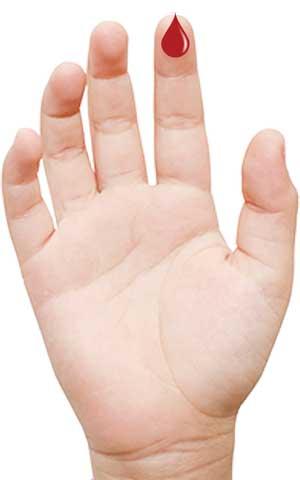Reply To:
Name - Reply Comment

 Diabetes is not in any way a novel topic for our country. Currently, around 1 out of every 12 adults in Sri Lanka is suffering from diabetes according to statistics. Most of our readers know about how an unhealthy lifestyle can cause diabetes, which is a lifelong disease. But it is not only adults that can develop diabetes. Children can also develop diabetes for various reasons and the number of children getting diagnosed with diabetes is going up with each passing year. So, today in Health Capsule, we decided to talk about diabetes in children. Joining with us is Dr. Prasad Katulanda, Consultant Endocrinologist and Senior Lecturer, Faculty of Medicine, Colombo.
Diabetes is not in any way a novel topic for our country. Currently, around 1 out of every 12 adults in Sri Lanka is suffering from diabetes according to statistics. Most of our readers know about how an unhealthy lifestyle can cause diabetes, which is a lifelong disease. But it is not only adults that can develop diabetes. Children can also develop diabetes for various reasons and the number of children getting diagnosed with diabetes is going up with each passing year. So, today in Health Capsule, we decided to talk about diabetes in children. Joining with us is Dr. Prasad Katulanda, Consultant Endocrinologist and Senior Lecturer, Faculty of Medicine, Colombo.
Action of Insulin
For the maintenance of our bodily functions, our blood sugar levels need to be kept at a fixed narrow range. With each meal we take, our digestive systems absorb food into our body, in the form of protein, sugars and lipids. Insulin is a hormone in the body which regulates the levels of sugar in a person’s blood, mainly through directing the excess sugar in the blood to specific tissues of the body. It is produced in the pancreas, by a type of cells called the beta cells. In diabetes, the action of insulin is impaired due to various reasons, elevating blood sugar to dangerous levels.
Types of Diabetes
Term ‘diabetes Mellitus’ encompasses a number of different types of diabetes. Diabetes Type 1 and 2, Maturity Onset Diabetes of the Young (MODY) and Neonatal Diabetes are some of them.
In type 1 diabetes the insulin producing beta cells of the pancreas are attacked by body’s own immune system causing inflammation and eventual destroying of the cells. This inhibits the production of insulin in the body, causing diabetes.
In contrast, type2 diabetes, which is the more common variant, is mainly caused by the resistance of body tissues to insulin. In other words, insulin is produced n the body, but they cannot carry out their action. This mainly occurs due to unhealthy living but also has a genetic predisposition to it.
Both MODY and neonatal diabetes occur due to genetic causes. Neonatal diabetes usually occurs from birth up to six months. MODY has different sub types and is usually diagnosed in teenagers.
Even though type 1 diabetes, which occurs due to the absence of insulin in body due to inflammation of the pancreas, was accepted to be the commonest diabetes type amongst children, other types, especially type 2, are being diagnosed increasingly.
Presentation
First presentation of the disease can also differ from patient to patient. A child with type 1 diabetes can present with severe thirst, wasting and excessive passage of urine as well as with severe infections. In extreme cases, they can present in a state of coma, due to a serious consequence of type 1 diabetes called Dibetic Keto Acidosis.
Children with type 2 diabetes are more likely to be overweight and have a strong history of diabetes running in the family.
Diagnosing Diabetes
Diagnosing diabetes is done through a series of blood tests including a Fasting Blood Sugar and HBA1C. But in urgent cases, it can be diagnosed with a random blood sugar sample as well.
In addition to diagnosing diabetes, it is important to specify the type of diabetes the child is having. This is because the treatment options differ from one type of diabetes to another.
Treatment 
Diabetes is a lifelong disease. Therefore the treatment should be taken throughout life too. Since the body does not produce insulin in type 1 diabetes patients, Insulin must be given from outside the body. It cannot be taken orally and needs to be injected into the body.
Insulin Administration
There are various types of insulin and various methods of administration. The patient needs a dose of short acting insulin, which acts fast and for a short period time, with each of the three meals. In addition, a dose of a slower acting and a longer-lasting type of insulin needs to be given at night to prevent the fluctuation of blood sugar levels in sleep.
While the commoner way of insulin administration is through a syringe with a small needle, directly into the skin, less painful and more convenient methods of insulin administration are being introduced today. Insulin pen, which is a small device dispensing a fixed dose of insulin can be used by even a child to self administer insulin. In addition, though it is not yet popular in Sri Lanka, an infusion pump attached to the body which dispenses insulin at regular intervals, without the need for constant injections is also a popular choice amongst the patients suffering from diabetes.
Other Treatments
Type 2 diabetes can be treated with lifestyle modification including a healthy diet and exercise, and medication. A variety of diabetic medications are available but a specialist should decide the most appropriate medication to a patient.
Monitoring and Follow up
Monitoring of blood glucose levels should be done frequently and a glucometer is a must have in a household with a diabetic child. Some glucometers with sensors attached, which does not require frequent puncturing of the skin, are becoming increasingly popular in the world.
In addition, frequent clinic follow-ups to assess the child’s diabetes control is crucial, as it is usually the patients who have uncontrolled disease for long periods of time who get the complications. Sugar control over the past three months can be assessed with the blood test called HBA1C.
In addition, less frequent checkup to asses for possible complications including eye checkup, kidney function assessments etc. are also done.
Preserving the Quality of Life
The aim of treatment in a child diagnosed to have diabetes is to allow him to lead a full and a fruitful life, unhindered by the disease. Ideally, this should be a team effort between the child, medical, staff, parents and even the class teacher.
Unlike adults with diabetes, who are usually past the prime of life, children diagnosed with diabetes have not yet reached physical maturity. Therefore it is important to not restrict their diets too much, or they might end up having faltered growth due to deficient nutrition. Therefore a dietitian should decide on the ideal diet of the
individual child.
In children with type 1 diabetes, calculating the number of carbohydrate in each meal is important, because the units of insulin needed correlates with the amount of carbohydrates ingested.
Message to Parents
A child being diagnosed with a lifelong illness can be devastating news for a parent. But nowadays with the proper medication and lifestyle changes, your child can also lead a full life without restrictions.
With the increasing number of obese and overweight children due to unhealthy living, type 2 diabetes in children is also on the rise. Therefore it is important to encourage your children to lead active lives with healthy eating habits, to protect them against the threat of young diabetes.